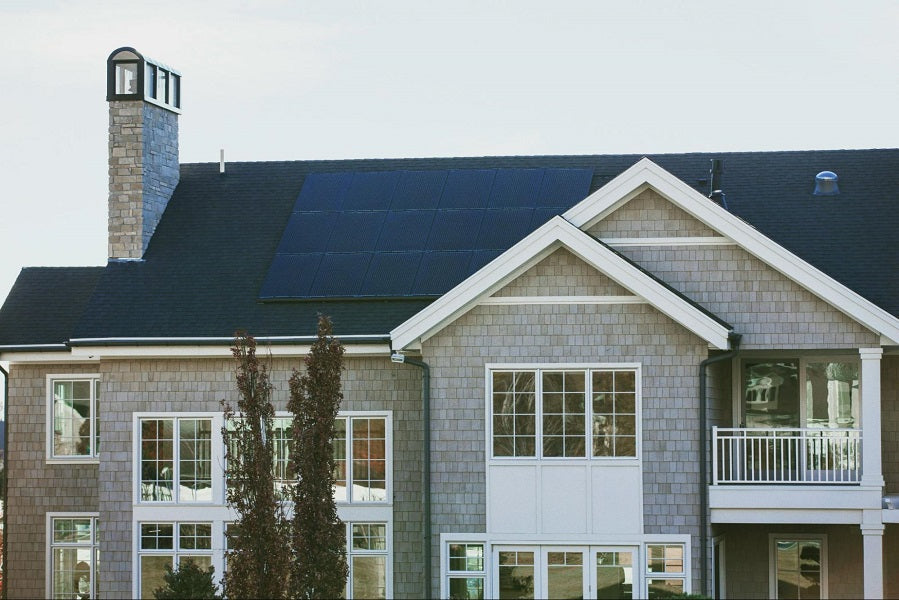MPPT (Maximum Power Point Tracking) technology is used in solar charge controllers and inverters to get the most power from solar panels. It can increase solar energy harvest by up to 20% to 30%, though the actual gain depends on factors like system setup, weather conditions, and the voltage difference between the solar panels and the battery.
Additionally, the MPPT tracker adjusts to changing weather conditions, optimizing the voltage and current to maximize solar panel efficiency. It also improves solar battery charging in several ways, ensuring optimal performance and preventing overcharging.
In this article, we’ll explore MPPT technology in more detail, explaining how it works and outlining its benefits as a solar power solution. On top of that, we’ll help you choose the right MPPT controller for your system.
Let’s begin!
What Is MPPT, and How Does It Work?
MPPT is a technology used in some renewable energy systems, particularly solar setups, to ensure panels generate the most power possible. It’s commonly integrated into solar inverters, charge controllers, and portable solar generators, where it optimizes power transfer.
The amount of power a solar array produces changes depending on environmental factors like sunlight and temperature. This means that each panel has an optimal operating point—the specific combination of voltage and current—where it generates the most energy based on these varying conditions.
However, this point changes throughout the day as the sun changes its position in the sky, and throughout the year as the angle and intensity of sunlight vary with the seasons. This is where MPPT comes in, constantly tracking these changes to find and maintain the optimal operating point for maximum energy production.
Without MPPT, solar systems can’t adjust to sunlight and temperature fluctuations, resulting in drops in output on cloudy days or during early mornings and evenings. Simply put, MPPT automatically adjusts the voltage and current to capture the most power from the available sunlight. This way, your solar array can keep generating electricity for your home, even in less-than-ideal conditions.
MPPT Solar Charge Controllers
MPPT technology is especially valuable when used in solar charge controllers, which regulate how power from the panels is used to charge solar batteries and prevent their overcharging.
In short, when MPPT is integrated into a solar charge controller, it adjusts the voltage and current coming from the panels to maximize power transfer to the battery. This leads to faster, safer, and more efficient charging, especially during times when sunlight is less intense.
When continuously adapting to changing environmental conditions, an MPPT solar charge controller not only facilitates solar panel optimization but also preserves the battery’s health. This way, it reduces the current once it reaches full capacity and extends both the lifespan of solar panels and solar battery life.
4 Benefits of MPPT in Solar Power Systems

The key benefits of MPPT in solar power systems include increased energy efficiency, maximized solar panel output, optimized battery charging, and improved performance in changing weather conditions.
Let’s explore them in detail:
#1. Increased Energy Efficiency
MPPT adjusts the voltage and current to match the best power output, ensuring your solar panels operate at their highest efficiency. Simply put, with MPPT, less energy is wasted and more power is transferred to your system.
This goes for bright sunny days as well as cloudy weather—regardless of the conditions, MPPT helps extract the most electricity possible. Over time, the higher efficiency leads to better performance and greater energy savings, making your solar setup more effective.
#2. Maximized Solar Panel Output
Solar panels don’t always work to their full potential because sunlight and temperature change throughout the day and year. MPPT tracks these changes and adjusts the electrical settings so that the panels generate as much power as possible.
This is especially useful in the early morning, evening, and on cloudy days when there’s not a lot of sunlight. By keeping the system operating at the optimal power point, MPPT ensures your solar array consistently delivers the highest possible output.
#3. Optimized Battery Charging
MPPT not only maximizes the power your panels generate, but it also ensures that power is used efficiently when charging the battery. It adjusts the voltage and current to match the battery’s needs, accelerating the charging process with minimal energy loss.
On top of that, it protects the battery’s health by preventing overcharging and undercharging, both of which can shorten its lifespan. This way, your system has reliable energy storage for longer, reducing your reliance on the grid and offering energy independence.
#4. Improved Performance in Changing Weather Conditions
Sunlight, which is essential for solar power systems, fluctuates due to clouds, shade, or seasonal changes. MPPT responds to these shifts in real time, adjusting the system to maintain the best power output.
Without MPPT, solar panels rely on the intensity of sunlight, producing much less energy in unfavorable weather conditions.
MPPT vs. PWM
When deciding between MPPT and PWM (Pulse Width Modulation), it comes down to your system’s size, efficiency needs, budget, and the weather conditions in your area.
MPPT controllers are great for systems with multiple panels or high-voltage solar arrays because they can optimize efficiency across bigger setups. They work by adjusting the power flow to get the most energy possible, making them perfect for commercial installations or large homes.
On the other hand, PWM controllers are simpler and more budget-friendly, which is why they’re commonly used in smaller off-grid solar systems like RVs and cabins. In other words, if your main concern is keeping costs down, a PWM controller might be the right choice.
Thanks to their efficiency, MPPT controllers speed up charging times, which is a significant benefit if you rely on solar energy to power your entire household. In contrast, PWM controllers, although reliable, are less efficient and may take longer to charge the battery.
Another advantage of an MPPT controller is that it offers more flexibility if you ever want to expand your system. PWM controllers are more limited in this regard, especially if you have higher-voltage panels.
As for environmental performance, MPPT controllers are ideal in cooler or shaded conditions, as they adjust to maintain optimal power output even when there’s little sunlight. Meanwhile, a PWM controller will likely be enough if you live in a warmer place, where the solar panel voltage is lower due to heat.
Now, let’s summarize the differences between MPPT and PWM controllers in a table:
|
Feature |
MPPT |
PWM |
|
Efficiency |
Efficient in varying weather conditions |
Works best in steady sunlight |
|
Cost |
More expensive |
More affordable |
|
System size |
Large systems |
Smaller setups |
|
Voltage compatibility |
Handles higher voltages |
Needs matching voltage between the panels and the battery |
|
Charging speed |
Faster charging |
Slower charging |
How to Choose the Right MPPT Controller

Choosing the right MPPT controller for your solar system is important because this ensures everything runs efficiently. Here are the key factors to consider:
- The voltage of your panels and batteries. For the controller to work properly, it should match your solar system’s voltage. Additionally, look at the amp rating and make sure the controller can handle the current your solar array produces to avoid overloading it.
- Your solar panel power (the total wattage). Pick a controller that can manage the wattage of your entire setup. This way, your system can work efficiently without loss of power or potential damage to the controller.
- Your battery type. Different batteries have different charging requirements, so the MPPT controller needs to be compatible with it to avoid overcharging, undercharging, or damaging the battery.
- Weather conditions in your area. If you live in a region with extreme weather or frequent temperature fluctuations, you should look for a controller that works well in changing environmental conditions.
- Scalability of your system. If you plan to expand your solar setup at some point, make sure the controller you choose has enough capacity to accommodate that growth.
- Additional features. Temperature control and remote monitoring, among other features, can help your solar setup run smoother.
Do You Need an MPPT Controller? Final Verdict
Whether you need an MPPT controller depends on your energy needs (which dictate the size of your solar setup), budget, and weather conditions in your area.
If you have a large system or plan on expanding it in the future, an MPPT controller may come in handy because it can handle high voltages and maximize the power your panels generate. It also allows for flexibility in system design, which means you’ll have a broader selection of panels to choose from.
While an MPPT controller adds to your upfront cost, the improved efficiency can lead to greater long-term savings as you make the most out of your solar system. In other words, your initial investment will pay off in the long run.
That is, if you have multiple high-voltage panels or live in an area with inconsistent sunlight or frequent cloud cover. In these cases, an MPPT controller helps maintain stable energy production by adapting to fluctuations in light and temperature.
Final Thoughts
MPPT technology in solar systems has several benefits, from adjusting to changing weather conditions to maximizing the solar array’s output. While it is an extra expense upfront, it pays off over time by prolonging the lifespan of both solar panels and the battery, delaying their replacement.
That said, MPPT makes the most sense for large solar setups in areas with inconsistent sunlight. For smaller systems and more favorable environmental conditions, a more budget-friendly alternative, PWM, is more than enough.
What Is MPPT? FAQ
#1. How does MPPT improve solar energy efficiency?
MPPT improves solar energy efficiency by constantly adjusting the voltage and current to match changing sunlight conditions. This means you get more energy from the same number of panels, even on cloudy days or early mornings and evenings, making your system much more efficient.
#2. Can MPPT work with all types of solar panels?
MPPT can work with all types of solar panels, as long as their voltage and current ratings are compatible with the controller. It’s especially useful for high-voltage solar arrays and large systems where maximizing efficiency is important.
#3. Which is better, MPPT or PWM?
MPPT is better for large setups and areas with varying sunlight because it helps convert more energy from the panels. On the other hand, PWM is more budget-friendly and works well for smaller systems with consistent sunlight, but it’s less efficient.
#4. What is the function of MPPT in a solar inverter?
The function of MPPT in a solar inverter is to ensure the panels operate at their best power output, increasing energy efficiency. It adjusts to changing sunlight conditions so your system produces as much electricity as possible throughout the day.
Disclaimer: The content on Portable Sun is for informational purposes only. Electrical work can be dangerous—always consult a qualified professional. We are not liable for any injuries, damages, or losses from installation or use. Always follow local regulations and safety guidelines when handling electrical components.

